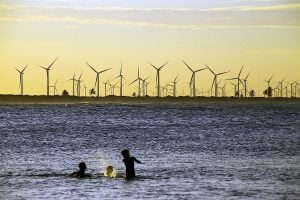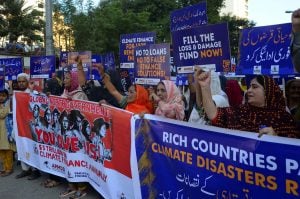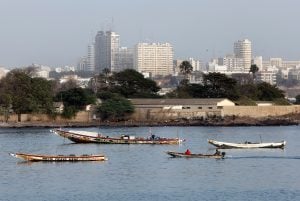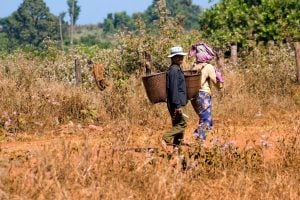The palm oil boom that took hold in the late 1980s and 1990s in Malaysia and Indonesia has now replaced vast areas of biodiverse, tropical rainforest and peatland with oil palm monocultures: regimented rows of trees, usually kept bare of other vegetation with chemicals.
This degradation of ecosystems has significantly contributed to greenhouse gas emissions, and the decline of orangutans, proboscis monkeys and other endemic species. There are now about 21 million hectares of oil palm plantations around the world – approximately 30 times the size of Jakarta’s metropolitan area.
Facing growing public concern, the industry is trying to reduce its environmental impact. Zero-deforestation commitments and sustainability certification schemes have emerged, while academics have been advocating for sustainable farming strategies and guidelines.
This call is being answered with pioneering, large-scale trials that are testing various restorative and regenerative approaches. Crucially, these solutions must balance sustainability with productivity, to protect local economies and communities. So, how are they doing it?
Falling under the umbrella of sustainability, the idea at the core of regenerative agriculture is to go beyond conserving or sustaining ecosystems for farming, to cultivate land in ways that benefit and improve ecosystems.
These agricultural practises take many forms. For example, combining crops and trees (agroforestry) improves soil health and biodiversity, while sowing fields with different plants between seasons (cover-cropping) minimises soil exposure and erosion, keeping important nutrients in the ground.
This type of farming incorporates both ancient and emerging techniques, and as such it may go by a multitude of different names. Common alternative names or sub-categories of regenerative agriculture include “agri-regeneration”, “agroecology”, “climate-smart farming”, “carbon farming” or “biointensive agriculture”.
Island efforts
A five-year experiment led by Germany’s University of Göttingen has found that introducing “islands” of native trees within oil palm plantations can help to restore ecosystem functions and biodiversity without decreasing crop yields.
The Ecological and Socioeconomic Functions of Tropical Lowland Rainforest Transformation Systems (EFForTS) trial was the first experiment to test the tree islands concept within an actively producing oil palm plantation. Previously, only inactive, post-agricultural degraded land had been used for trials. Working with a mid-sized oil palm company, researchers set up 52 tree islands of different sizes across a 140-hectare plantation in Sumatra, Indonesia.
The results, published in 2023, were more promising than anticipated. “It increased biodiversity and ecosystem functioning overall, and it doesn’t decrease oil palm yield at this stage,” says Clara Zemp, who led the study. “For restoration it’s a suitable strategy and for productivity it’s still compatible.” This approach could also promote soil fertility and make oil palm production more resilient to climate change.
The EFForTS trial found tree islands offer multiple ecological benefits, such as better water filtration, biomass input and soil fertility, compared to conventionally managed oil palm. Over a five-year period, there was no loss in productivity. After five to seven years, there could be marginal declines as the trees start competing with the oil palms in the area they were planted, which in this case covered less than 5% of the total plantation.
Restoration of river margins
The Biodiversity and Ecosystem Function in Tropical Agriculture (BEFTA) programme is another long-term research project based in Sumatra. It collaborates with an industry partner, Golden Agri-Resources, to test potential strategies for biodiversity and ecosystem restoration.
“Restoration is one of those areas – so little is known about it – understanding how best to do that in an oil palm context is quite important,” says Edgar Turner, a University of Cambridge zoology professor who co-pioneered the BEFTA programme.
A good starting point, Turner suggests, is restoring river margins in oil palm landscapes – many have been lost through planting that violated national regulations and sustainability requirements. These planted oil palm trees along river margins can cause soil erosion and increase the likelihood of chemical run-offs polluting rivers.
Furthermore, riparian zones provide important habitat and connectivity for many endangered species. In Sabah in northern Malaysian Borneo, WWF-Malaysia is collaborating with the state-owned oil palm company Sawit Kinabalu to restore a four-kilometre riparian corridor. It connects Silabukan Forest Reserve to the Tabin Wildlife Reserve, facilitating movement of an isolated population of approximately 50 orangutans.
“River systems are coming out as being a really key management point for oil palm plantations,” says Turner. “They’re not a huge area and they’re not the most productive, so you can restore them and potentially you can have quite a big impact.”
Regeneration during replanting
The Riparian Ecosystem in Tropical Agriculture project, which is part of the BEFTA programme, tests different restoration methods against conventional management. It has been running for six years. “Where we planted forest trees, a lot of the trees are just over eight metres tall, so beginning to feel like forest when you go into the plots,” says Turner.
“It will be interesting to see if potentially having these plots could mean these areas are buffered from some of the extreme temperatures associated with climate change,” he adds.
Turner believes the need to cultivate resilience to crop failure from climate change should be a key driver in adopting agroforestry strategies for oil palm: “Anecdotally, growers are very worried about replanting because of the unreliability of rainy seasons. It’s things like that which have a really tangible effect on how well these crops can be grown.”
Agroforestry
Combining agriculture with trees, which generates benefits for soil health, crop yields and wildlife
According to Turner, it is easier to set up riparian restoration plots during re-planting, when plantation managers are more open to changing their practices – and digging tools are on hand. A large proportion of the oil palm that was planted in the late 1980s and 1990s will be replanted over the next decade, so an opportunity to try new things has emerged.
The next phase of the EFForTS experiment is to test what happens when tree islands are established during replanting, which is being trialled at a site in Sabah. “It will take three to five years before the effect on productivity can be tested, but I think there is potential for large-scale application at the replanting stage,” agrees Zemp.
Bringing life to the understory
Soil-friendly strategies may also diminish reliance on chemical inputs. This has been the case at a BEFTA understory vegetation pilot project.
“We found that where you have more re-growth [in the understory] you get all kinds of benefits in terms of biodiversity and ecosystem processes, and it doesn’t seem to affect yield at all,” says Turner. “We’re very aware that if you reduce yield, that’s when you might get more areas of oil palm. What you want are productive agricultural systems that are also more sustainable.”
The understory strategy has since been adopted across 400,000 hectares of Golden Agri-Resources owned plantations, as well as the 100,000 hectares managed by collaborating smallholders.
“We are trying to transform agronomy practices and go more towards agro-ecology,” says Jean-Pierre Caliman, director of the group’s research and development arm, SMARTRI. “Soil cover is the first criteria because it is linked with the health of the soil.”
The pilot found that keeping some level of weeds increases biodiversity, which in turn helps with pest control, reducing the need for pesticides. Caliman explains this vegetation also significantly protects the soil by reducing water loss by 10% – particularly welcome during periods of lower rainfall.
Caliman is seeing wider adoption of this strategy within the industry, yet he notes some growers are reluctant to change. And smallholders tend to be simply unaware of the importance of vegetation cover for soil health. Instead, they spray herbicide across their land.
Integrating livestock
An alternative weed-management strategy is to graze plantations with livestock. According to Badrul Azhar, a conservation biology and wildlife ecology professor at the University of Putra Malaysia, this traditional practice is rarely used in the Malaysian palm oil industry.
Azhar is leading research into the potential benefits of livestock for oil palm sustainability, such as sequestering carbon, restoring topsoil, improving biodiversity and reducing fertiliser and pesticide use.
A recent academic study found adding livestock to oil palm plantations also enhances food security through localised beef production.
This strategy is unpopular among private companies that “only want to focus on the oil palm”, says Azhar, noting concerns that cattle will compact soils, or spread a fungal disease that affects oil palm buttresses. He says these are issues that can be prevented with proper management.
Sawit Kinabalu is one of the few producers in Malaysia to have trialled the method, in its Sabah plantations. Cattle grazing is now used on 30,000 hectares, half of its total estate.
“It has to be systematically done,” says Azid Kabul, a production veterinarian who led the implementation and management of the Sawit Kinabalu trial until 2022. For example, cattle are moved using a 90-100-day rotation to manage grazing. This movement is coordinated with the estate’s overall management, to ensure it avoids harvests or replanting efforts.
“We have successfully helped the estate in reducing their use of chemical herbicides,” Kabul adds. “Instead of blanket-spraying, they just spot-spray; instead of four to five times a year, they can reduce to two times.”
Making sustainability the routine
Azhar believes more attention should be paid to tackling the overuse of agrochemicals and, more generally, to plantation management. He thinks sustainability best practice is currently too limited, with its focus on conserving and protecting particular patches of land.
“Not all estates have these conservation features, so it’s not sufficient at the moment,” says Azhar. “The real transformation needs to involve the routine agronomy practices, which is where the weak management is.”
Despite the growing evidence of effective sustainability strategies, scaling them across the wider industry remains a challenge. The scientific community shares its findings through its networks, conferences, and some media coverage, but Clara Zemp notes frustration: “There has not been so much interest in establishing tree islands from the industry, at least in Indonesia.”
“It’s a win-win,” she adds. “I do not see any reason why the industry would not do it.”
The EFForTS study suggests knowledge-sharing could be accelerated by incorporating agroforestry strategies (like establishing tree islands) into certification schemes, for example the Roundtable on Sustainable Palm Oil (RSPO).
To accommodate the evolution of this research, Edgar Turner suggests adding more detail to the RSPO’s principles and criteria framework on understory and river margins management.
The RSPO told Dialogue Earth it recognises the opportunity for these research developments to be included in best practice guidelines. The latest revisions to its principles and criteria framework are due to be finalised at the end of this year.
Building a regenerative framework
Other organisations promoting sustainable practices in palm oil are taking different approaches. The Rainforest Alliance’s regenerative coffee “scorecard”, which supplements its sustainable agriculture certification programme, has now been extended to palm oil. The assessment considers soil, biodiversity, water, crop resiliency and livelihoods.
Sustainability can also be improved by taking a landscape approach, rather than focusing on individual sites. This is one of the main principles of the UN’s Forest and Landscape Restoration Mechanism (FLRM).
WWF-Malaysia has adopted this integrated approach in restoring the riparian corridor between the Tabin and Silabukan reserves in Sabah. The NGO is collaborating with three oil palm companies (KLK Malaysia and the state-owned Sabah Softwoods and Sawit Kinabalu), as well as aligning its conservation work with the state’s conservation strategy.
“We are trying to show in Sabah that ecosystem restoration is part of a wider approach: it’s about engaging all stakeholders, including the jurisdiction that involves the government,” says Faisal Mohd Noor, who leads this WWF-Malaysia project.
The NGO is developing a guidance document for ecosystem restoration with the Sabah Forestry Department. Along with providing a guide to practitioners on high-priority restoration areas, it will establish an essential network for everybody who is contributing to these efforts. “There needs to be coordination around what others are doing, which tends to be in silos,” says Noor.
The oil palm sector has been hit hard by environmental concerns. Turner believes it is therefore further ahead than most other tropical agricultural crops “in terms of thinking about sustainability and having a framework to put that in”.
“We need to be thinking more about how we can harness ecosystem services and species found in agricultural systems,” he adds. “Lots of people are thinking about that now.”









